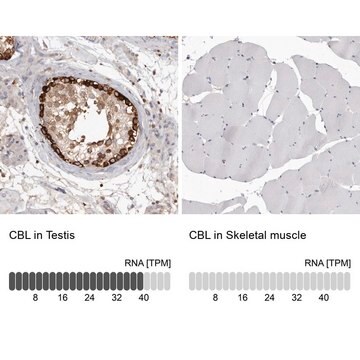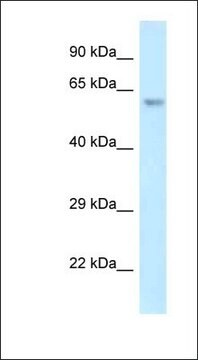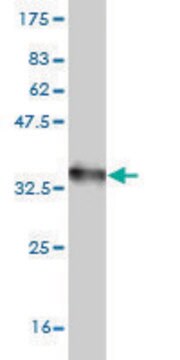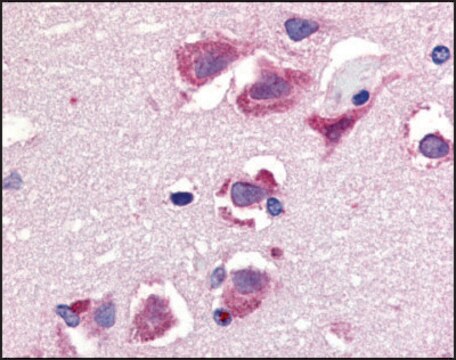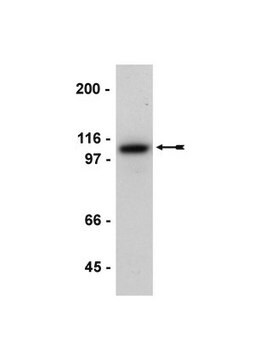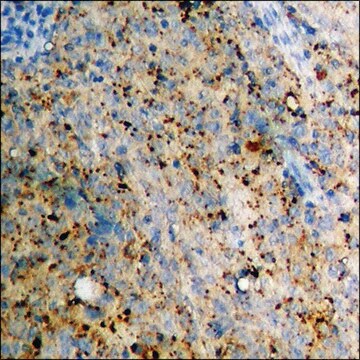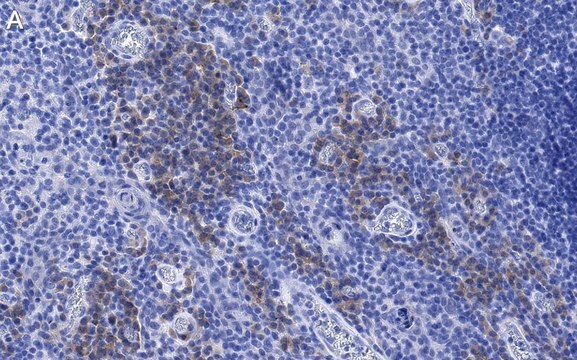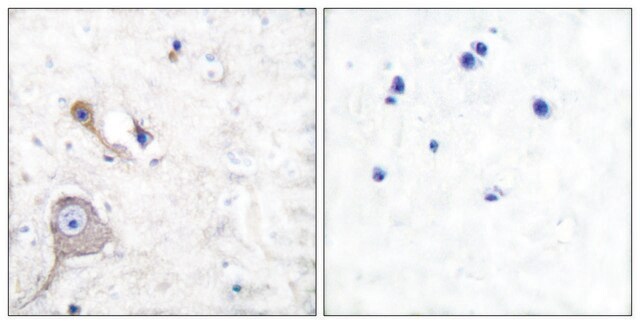MABF981
Anti-CXCR4 Antibody, clone 12G5
clone 12G5, from mouse
Sinonimo/i:
C-X-C chemokine receptor type 4, CXC-R4, CXCR-4, FB22, HM89, LCR1, Leukocyte-derived seven transmembrane domain receptor, LESTR, Lipopolysaccharide-associated protein 3, LAP-3, LPS-associated protein 3, NPYRL, Stromal cell-derived factor 1 receptor, SDF-
About This Item
Prodotti consigliati
Origine biologica
mouse
Livello qualitativo
Forma dell’anticorpo
purified immunoglobulin
Tipo di anticorpo
primary antibodies
Clone
12G5, monoclonal
Reattività contro le specie
human
tecniche
flow cytometry: suitable
immunocytochemistry: suitable
neutralization: suitable
Isotipo
IgG2aκ
N° accesso NCBI
N° accesso UniProt
Condizioni di spedizione
dry ice
modifica post-traduzionali bersaglio
unmodified
Informazioni sul gene
human ... CXCR4(7852)
Descrizione generale
Immunogeno
Applicazioni
Immunocytochemistry Analysis: A representative lot stained paraformaldehyde-fixed CHO cells transfected to stably express human CXCR4/fusin (Endres, M.J., et al. (1996). Cell. 87(4):745-756).
Neutralizing Analysis: A representative lot blocked SDF-1-induced lymphocyte chemotaxis using freshly isolated human PBMCs (Bleul, C.C., et al. (1997). Proc. Natl. Acad. Sci. U S A.94(5):1925-1930).
Neutralizing Analysis: A representative lot blocked the infection of CXCR4+/CD4+ rhabdomyosarcoma (RD) cells by seven HIV-1 (LAI, RF, Gun-1wt, Gun-1var) and HIV-2 (ROD A/B and CBL-23) strains as assessed by >95% reduced syncytium (multinucleated cell) formation due to viral infection-induced cell-to-cell fusion. Clone 12G5 also blocked Gun-1wt, Gun-1var, and CBL-23, but not the other 4 HIV strains from infecting HeLa/CD4 and C8166 cultures (McKnight, A., et al. (1997). J. Virol. 71(2):1692-1696).
Neutralizing Analysis: A representative lot blocked HIV-2 /vcp strain from infecting U87 cells transfected to express human CXCR4/fusin as assessed a reduction of syncytium (multinucleated cell) formation due to viral infection-induced cell-to-cell fusion (Endres, M.J., et al. (1996). Cell. 87(4):745-756).
Note: Although clone 12G5 binds cell surface CXCR4, efforts to immunoprecipitate or immunoblot CXCR4 were reported to be unsuccessful (Endres, M.J., et al. (1996). Cell. 87(4):745-756).
Inflammation & Immunology
Immunoglobulins & Immunology
Qualità
Flow Cytometry Analysis: 1.0 µg of this antibody detected CXCR4 in Jurkat cells.
Descrizione del bersaglio
Stato fisico
Stoccaggio e stabilità
Handling Recommendations: Upon receipt and prior to removing the cap, centrifuge the vial and gently mix the solution. Aliquot into microcentrifuge tubes and store at -20°C. Avoid repeated freeze/thaw cycles, which may damage IgG and affect product performance.
Altre note
Esclusione di responsabilità
Non trovi il prodotto giusto?
Prova il nostro Motore di ricerca dei prodotti.
Raccomandato
Codice della classe di stoccaggio
12 - Non Combustible Liquids
Classe di pericolosità dell'acqua (WGK)
WGK 2
Punto d’infiammabilità (°F)
Not applicable
Punto d’infiammabilità (°C)
Not applicable
Certificati d'analisi (COA)
Cerca il Certificati d'analisi (COA) digitando il numero di lotto/batch corrispondente. I numeri di lotto o di batch sono stampati sull'etichetta dei prodotti dopo la parola ‘Lotto’ o ‘Batch’.
Possiedi già questo prodotto?
I documenti relativi ai prodotti acquistati recentemente sono disponibili nell’Archivio dei documenti.
Il team dei nostri ricercatori vanta grande esperienza in tutte le aree della ricerca quali Life Science, scienza dei materiali, sintesi chimica, cromatografia, discipline analitiche, ecc..
Contatta l'Assistenza Tecnica.